

museo civico castello ursino
Carmen Cardillo (catania) |
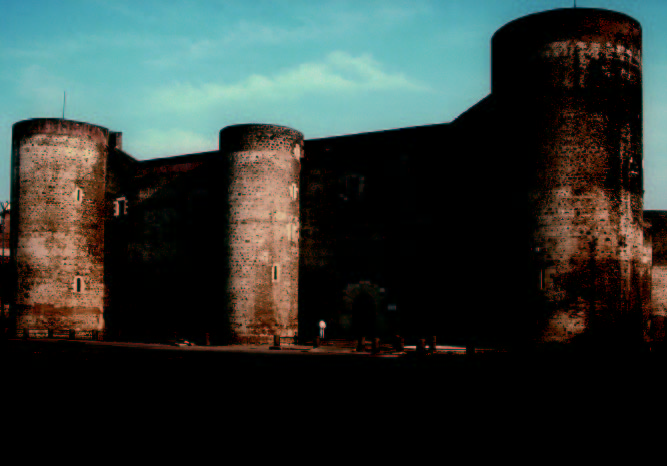 |
Nel
1239 Federico II di Svevia decide la costruzione di un castello costiero
affidandola a Riccardo da Lentini, simbolo del potere e dell’autorità
imperiale per dominare la riottosa popolazione catanese. |
| In 1239, Frederick II from Swabia decided to build a coast castle and committed it to Riccardo da Lentini. The building was meant to be a symbol of the imperial power and authority towering above the unruly population of Catania. Completed in 1250, it is a perfect architecture: a square plan developed around a square courtyard with powerful cylindrical towers at the corners; the religious symbols carried out in coloured pebbles by the multi-ethnic workmen present in the empire are still visible on the mortar of the lavic stone wall weft. | |
MUSEO
CIVICO CASTELLO URSINO Piazza Federico di Svevia 95121 Catania, Italy tel. +39 095 345830 www.turismo.catania.it |
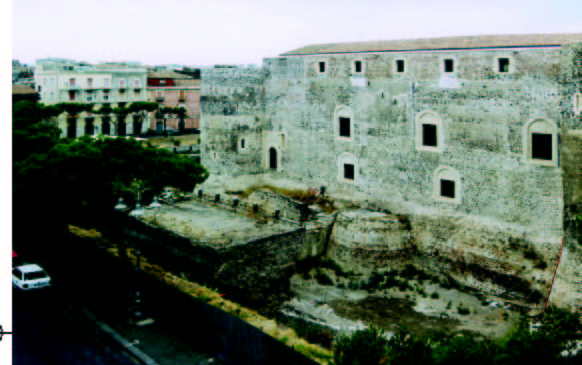 |
Castello Ursino |
Nel
1669 l’eruzione sotterrò tutta la città, la sciara
di lava, che si riversò nel fossato colmandolo per poi raggiungere
il mare, mortificò lo slancio verticale del bastione e solo dopo
anni di scavi è riapparso il grandioso basamento a scarpa delle
torri. Oggi il Castello Ursino è in pieno centro storico, l’abbassamento
dovuto all’eruzione, l’interramento delle aree circostanti,
l’espansione edilizia fra Settecento e Ottocento gli hanno fatto
perdere la posizione marginale originaria, compromettendone
In 1669, the eruption buried the whole town. The lavic trail, which flew
into the ditch and filled it |
| Carmen
Cardillo Nata a / Born in Catania, 1975 Vive e lavora tra / She lives and works between Milano e / and Catania carmencardillo@virgilio.it |
Museo
Civico Catania, 2004 |
L’interesse verso i luoghi di passaggio intesi come spazi privilegiati per un racconto oggettivo ed esperienziale caratterizza il lavoro di Carmen Cardillo: riprese fotografiche del Castello e un’installazione che parla del Museo Civico di Catania. Le immagini, disposte in sequenza, sembrerebbero suggerire una volontà di catalogazione dell’iconografia architettonica. In realtà, istanze narrative e metaforiche s’insinuano nella partitura. Infatti, le differenze di luce veicolano una lettura delle fotografie in chiave temporale e l’assenza di un ingresso che introduca al Castello sottolinea un isolamento determinato dall’indifferenza e dall’incomprensione che spesso occultano il valore storico-artistico del Museo e delle sue collezioni. The interest towards the areas of passage meant as privileged spaces for an objective experiential tale characterised Carmen Cardillo’s work: photographic shots of the castle which speak about the Civic Museum of Catania. The images, arranged in sequence, would seem to suggest a will of cataloguing the architectural iconography. In reality, narrative metaphoric instances insinuate into the score: the differences in light convey a reading in a chronological clef, and the absence of an entry to lead into the castle underlines an isolation determined by the indifference and lack of understanding which often obscure the historical and artistic value of both the Museum and its collections. Lucilla Brancato |
|
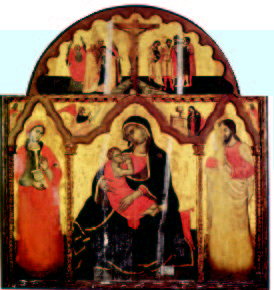
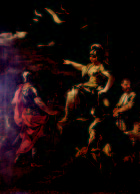 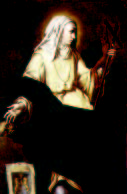
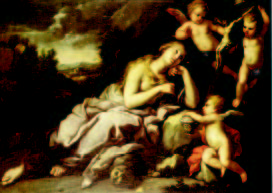 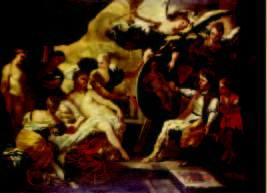 |
Ignoto
manierista meridionale / Unknown mannerist of Southern
Italy, Nascita della Vergine,
fine sec.XVI / late 16th century, olio su tela / oil on canvas, 102 X
75 cm |
Nel
1934 il Castello viene trasformato in Museo Civico, sede delle collezioni
civiche che hanno inizio nel 1826 con il lascito dei dipinti di Giovan
Battista Finocchiaro, a cui si aggiungerà nel 1866 In
1934, the Castle was turned into a Civic Museum, the seat of civic collections,
which started |
Filippo
Leonardi |
Ignoti
artisti meridionali, 2004 |
L’installazione
di Filippo Leonardi - cinque casse di legno bianche e la proiezione di
immagini digitalizzate di altrettanti dipinti scelti all’interno
della collezione ma non presenti nell’allestimento
The installation made by Filippo Leonardi, five
white wooden cases and the projection of digitalised Lucilla Brancato |
|
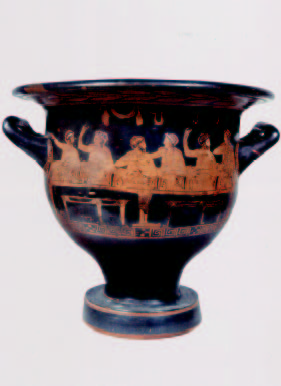
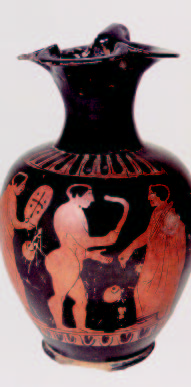
|
Cratere
a campana / Bell-type crater |
I
manufatti sono vasi attici a figure rosse, fanno parte della collezione
Biscari e sono di provenienza ignota.
The Attic vases with red figures, are part of the Biscari
collection and their provenance is unknown. |
| Lambrini
Boviatsou Nata nel / Born in 1975 Vive e lavora tra / She lives and works in Athens e / and Rhodes |
Kylix
Oinochoe Cratere, 2004 |
Lambrini Boviatsou è una pittrice contemporanea greca con una creatività fantasiosa. Per la sua partecipazione alla mostra presso il Castello Ursino di Catania si ispira a tre vasi attici a figure rosse della collezione del museo e crea la loro versione/continuazione contemporanea dipingendo tre moderni oggetti da cucina che rimandano a quelli antichi (kylix, oinochoe, cratere). L’artista dipinge solitamente delle figure deformate - principalmente la sua stessa immagine - su oggetti metallici, come se fosse un vero riflesso sulla superficie metallica. La perfezione stilistica combinata con la spontanea ingegnosità creano un gioco di continuazione e di dialogo tra il tradizionale e il contemporaneo, tra la verità e l’illusione. Lambrini Boviatsou is a contemporary Greek painter with a great inventing creativity. For her participation at the exhibition of the Castello Ursino Museum in Catania she got inspired by three Attic red-figured vases from the Museum collection and decided to create their contemporary version/continuation by painting on modern kitchen objects that imitate the three ancient ones (kylix, oinochoe, crater). The artist usually paints deformed figures - principally her own image - on various metallic objects, as if it was a real reflection on the metal surface. The style perfection combined with the spontaneous imagination of the artist create a game of continuity and dialogue between traditional and contemporary, between reality and illusion. Lina Tsikouta |
|